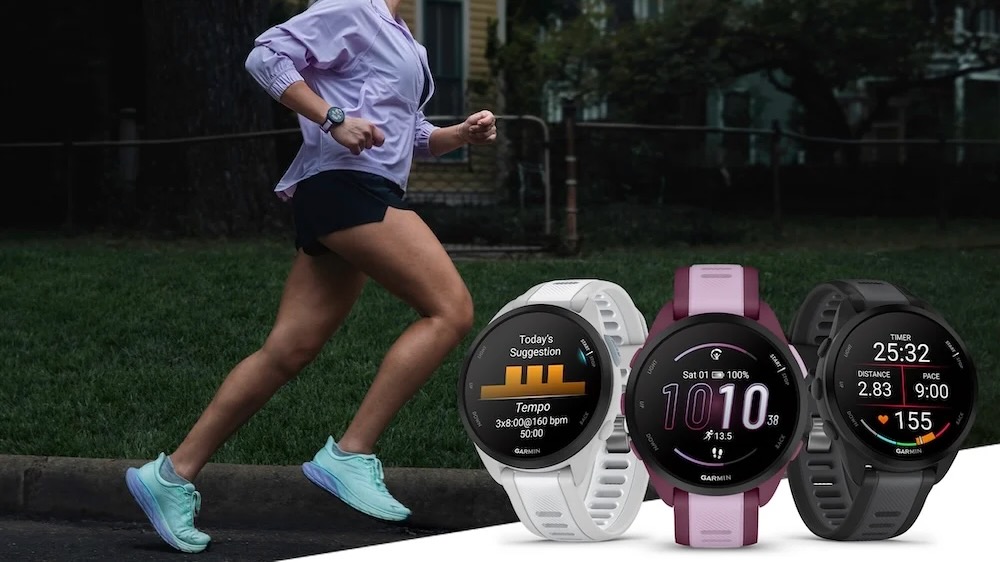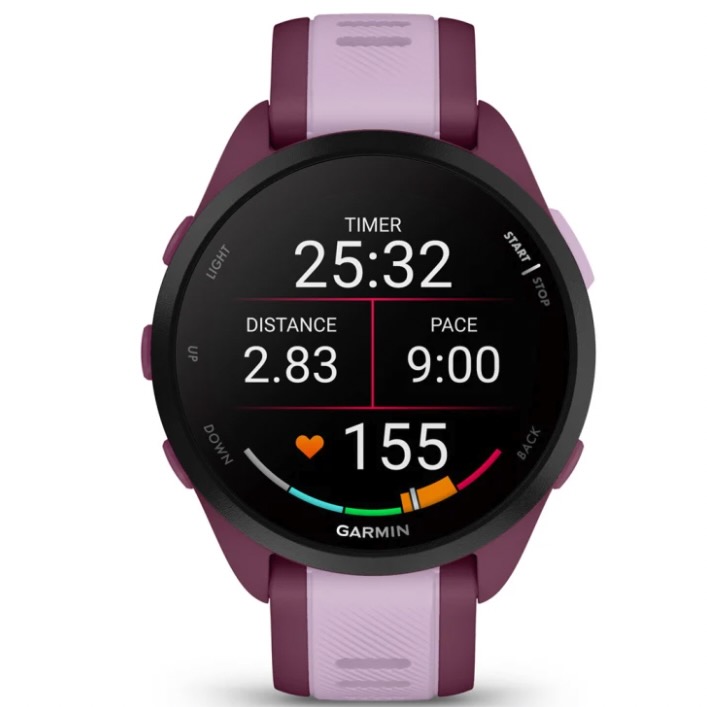How the new Garmin Forerunner 165 compares to the Forerunner 55 and 265
We break down all the ways the Forerunner 165 beats the 55 in features — and how it falls short of the Forerunner 265.

What you need to know
- Announced on Tuesday, the Garmin Forerunner 165 and 165 Music are available now for $249 and $299, respectively.
- The Forerunner 165 has a 1.2-inch AMOLED display, 11-day battery life, all-systems GNSS tracking, elevation data, music storage, and Garmin Pay.
- It measures your run's training effect and wrist-based form analysis, but not your training load, status, or readiness.
The Garmin Forerunner 165 has arrived, costing just $50 more than the 2021 Forerunner 55, with some major upgrades like an AMOLED display, pulse ox, contactless payments, and a post-activity summary of your run's training effect on your VO2 Max.
Compared to the Forerunner 55, the Forerunner 165 has a shorter battery life (11 vs. 14 days), a trade-off for the more readable AMOLED touch display instead of a non-touch MIP display. We suspect runners will accept that trade-off for other new benefits, like more accurate multi-system GNSS tracking and a more accurate Elevate v4 heart rate sensor that can track stress and burned calories.
Garmin even offers the enhanced Body Battery tool introduced on the Garmin Venu 3, which has the ability to detect naps. You don't get its ECG or skin temperature readings, but the Forerunner 265 didn't have those either.
The Forerunner 55 lacked an altimeter for judging elevation gain or a compass for breadcrumb navigation, both of which the Forerunner 165 adds. The newer watch also gives you a Morning Report summary of your sleep data and suggested running workout, plus indoor workouts like HIIT or pilates for cross-training.
Most importantly, the Forerunner 165 will show your aerobic or anaerobic training effect after a run, along with other metrics like running power and running dynamics that the Forerunner 55 never received.

While this all makes the Forerunner 165 much more modern than the Forerunner 55, it also has compromises to hit a lower price point than the Forerunner 255 and Forerunner 265. Aside from the shorter battery life, you lose dual-band GPS and a gyroscope for more accurate wrist data.
You may also prefer the Forerunner 265's larger 1.3-inch display with Gorilla Glass 3 protection instead of the 165's vague "chemically strengthened glass."
Get the latest news from Android Central, your trusted companion in the world of Android
The main difference between Forerunner 165 and 265 is the software. You get about 30 fewer sports modes on the Forerunner 165 compared to its pricier siblings, multisport tracking in particular. You can no longer check your training status to see if your training load is optimal or if your VO2 Max is steady or increasing.
Other useful metrics — like acute load, training load focus, Performance Condition, and your current training readiness — are also exclusive to the Forerunner 265. Knowing when you're overtraining or what kind of runs you're slacking on can be really useful for improving your VO2 Max.
On the other hand, if you're the kind of runner who will happily follow a Garmin Coach training plan or daily suggested workouts — without needing to see the training load data for yourself — then you can save yourself $200 compared to the 265 and choose the Forerunner 165 instead.
Aside from the $230 COROS PACE 3 (which has an MIP display), you'll rarely find a running watch that's both affordable and feature-packed like the Forerunner 165. It's available now for $249 in Black or Whitestone finishes, while the Forerunner 165 Music is $299 and ships in colorful Berry or Turquoise as well. With the Music Edition, you get 4GB of music storage space and a wi-fi antenna for speedier downloads and uploads.

Get running
With all of the training essentials you could want as a runner, the Garmin Forerunner 165 is the perfect entry point for those who have never worn a Garmin watch before. It's hundreds less than your typical Garmin, but it has the recent upgrades like an AMOLED display that makes them a bit more palatable to people who use everyday smartwatches.

Michael is Android Central's resident expert on wearables and fitness. Before joining Android Central, he freelanced for years at Techradar, Wareable, Windows Central, and Digital Trends. Channeling his love of running, he established himself as an expert on fitness watches, testing and reviewing models from Garmin, Fitbit, Samsung, Apple, COROS, Polar, Amazfit, Suunto, and more.
